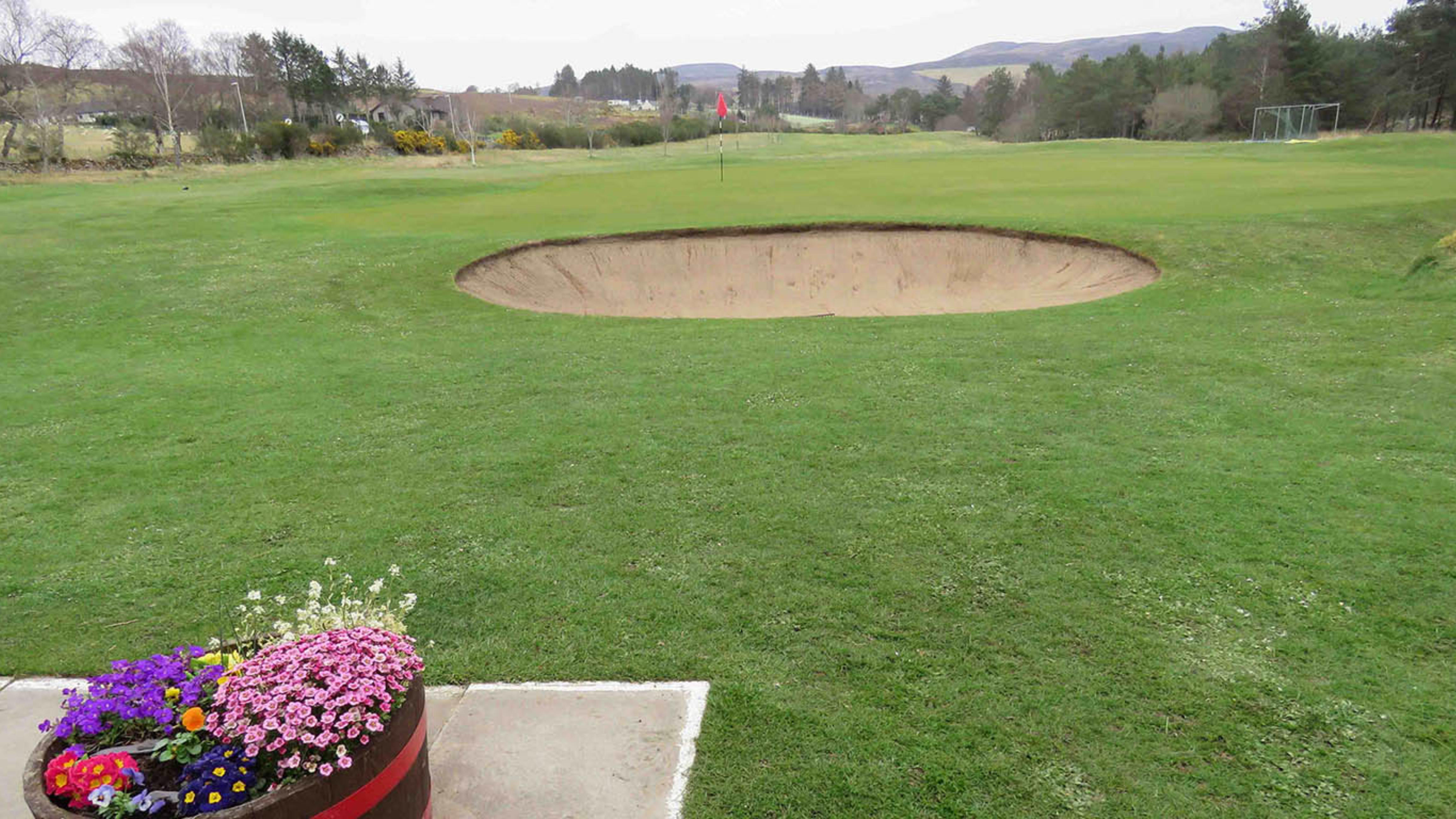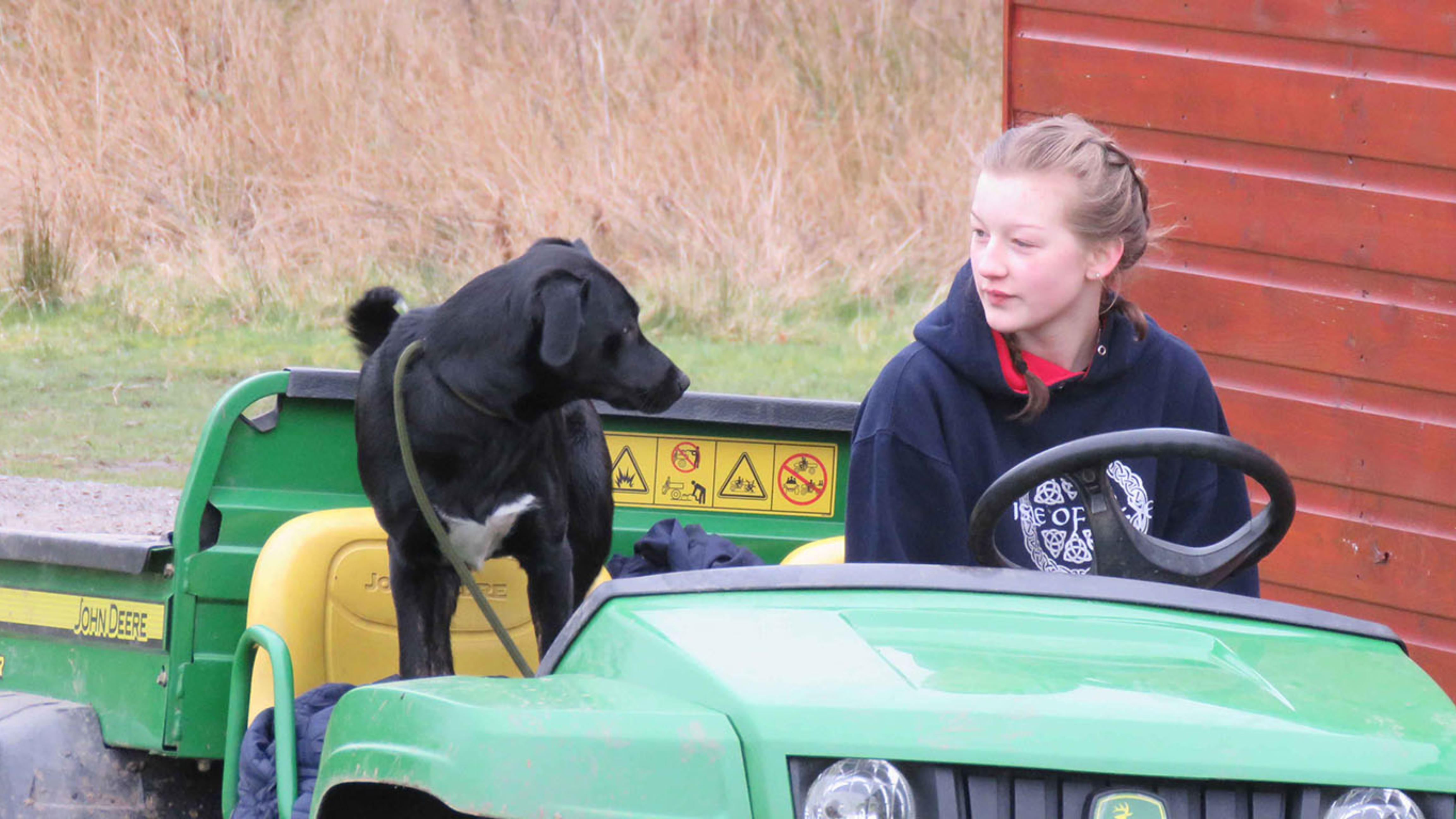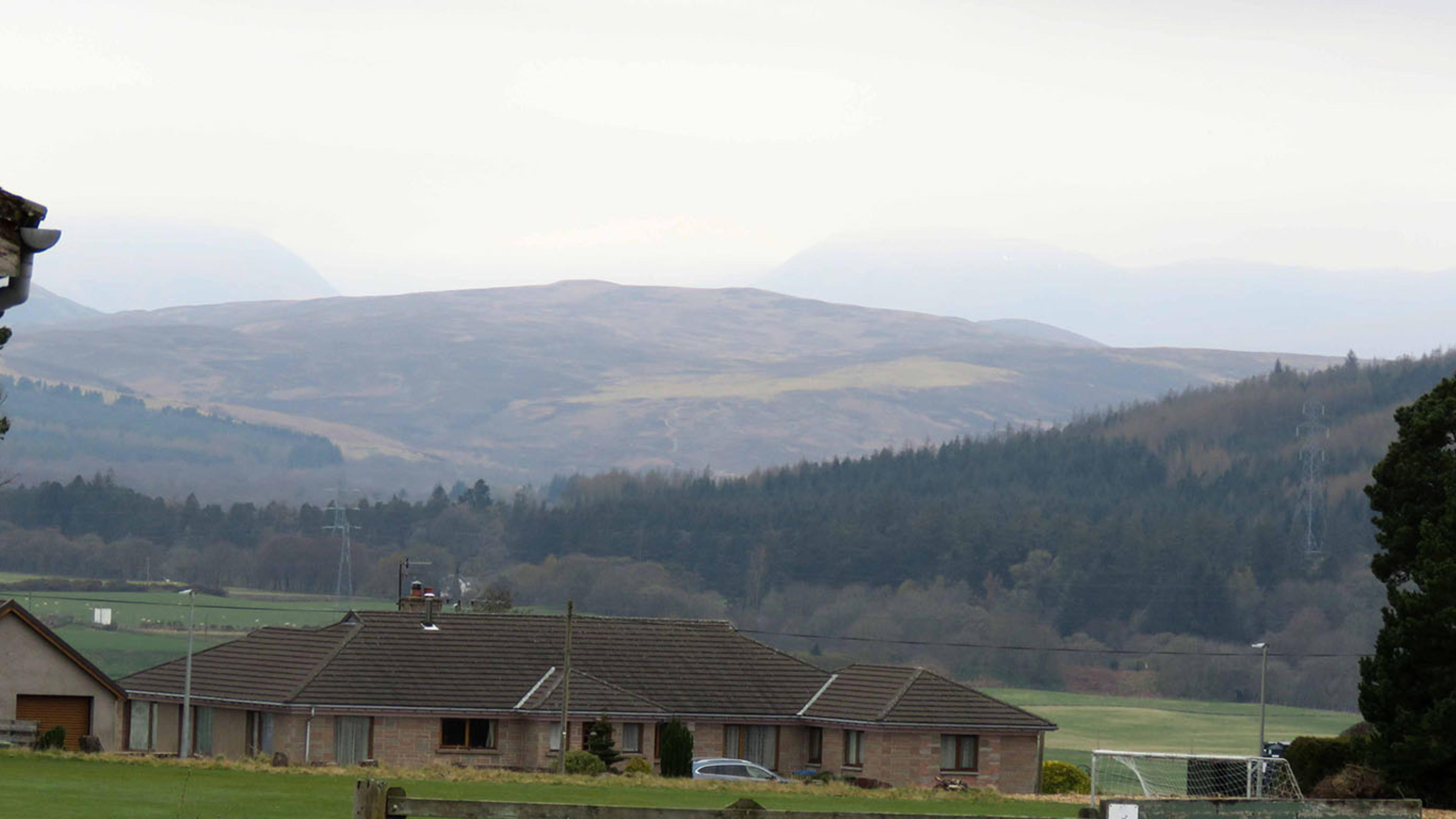- Homepage
- News and Features
- Women & Girls' Golf Week: Caroline and Carron Munro
Women & Girls' Golf Week: Caroline and Carron Munro
What would a golf course operated entirely by ladies look like?
Such a course actually exists in the UK, albeit way up in the Scottish Highlands, where Caroline Munro is the solitary greenkeeper and each of the other members of the club’s management structure are women.
The twin villages of Bonar Bridge and Ardgay have a population of about 1,500, scattered across the surrounding hills. It’s not a large target demographic for the club to exploit and the membership is just 150 players. However, around 40% of those are female – far in excess of the national average of 12%.
Life here is rural and the ancient practice of crofting is common, with many of the population owning a small patch of land that they use for small‑scale farming.
“You do your shearing, your dipping and your dosing and everyone gets together and helps each other,” said Caroline, head greenkeeper at Bonar Bridge, Ardgay Golf Club. “I used to help my uncle shear his sheep. The fleece would come off the sheep and be put in bags that would be hung from the rafters and the bairns would get to use them as a swing. You would stand in them and pack them down, so you would be swinging back and fore in these big bags, it was a lot of fun.”
Usually the local community is dispersed across the hills. But once a year, in August, they come together for the Kyle of Sutherland Gala Week. There’s a raft race, space hopper race, chilli eating competition, flower festival and other traditional events, although the controversial baby show has been cancelled due to everyone believing their child should win. At the golf club a par‑3 competition is hosted, they host the darts competition and there’s also, appropriately, a ladies’ night.

Bonar Bridge, Ardgay's 18th hole
Despite its low membership, Bonar Bridge, Ardgay is a firm fixture of the community, under the stewardship of course manager Caroline. She chose greenkeeping as a career after undertaking work experience during her studies at Golspie High School. Caroline explained that her reasons weren’t exactly out of a love for the game: “This is going to sound so shallow, but the boy I fancied was doing work experience at Royal Dornoch, so I put my name down too!
“I did a week’s work experience and thoroughly enjoyed it so I asked Robert Patterson, who was the course manager there at the time, for a summer job and at the end of that he asked if I wanted to start full time.”
Aged just 15, Caroline had to delay and go back to school for her final year, but each school holiday she worked at Royal Dornoch until she graduated.
“I just liked being outside,” she explained.”There’s a satisfaction in cutting grass, striping up lines and the smell of cut grass.”
Bonar Bridge, Ardgay is a nine‑hole heathland course, with membership costing just £200 per year. With around 150 members, it’s just enough to cover Caroline’s wages. As such, the club’s survival depends upon its position at the heart of the community and the relationships Caroline has built with other golf courses in the area. Take the tree maintenance project that is ongoing, which is undertaken by Caroline’s dad, who owns a wood processing plant and sells the timber to earn a small income – every penny helps.
With a limited budget, access to machinery requires no small degree of creativity and other clubs in the area will often share resources to help each other out. There’s an informal co‑operative of golf clubs in the area, many of whom have as limited resources as Bonar Bridge, Ardgay. For example, the club owns a Wiedenmann Super 500, purchased using a grant received from windfarm developers. Caroline said: “James MacBeath at Brora borrows it, as do Iain Macleod at Tain and Mike Keay at Portmahomack. We really try to help each other out, so in return I’ll use Iain’s topdresser or James’ greens roller. I share deliveries of fertiliser with Gary Urquhart at Invergordon and I’ll nip down there to pick it up, to save costs. He’s come up and sprayed for me when I’ve had fusarium and I’ve gone down and helped him. Even Eoin Riddell at Royal Dornoch helps out whenever he can.”
Of course, equipment sharing is just one aspect of the relationship and when a club requires help in other ways, such as when nearby Golspie was damaged by flooding or when the Boys’ Internationals was held at Dornoch, the community of greenkeepers comes together to lend a helping hand.

Daughter Carron and Boots the dog keep Caroline company throughout the summer
There’s one other piece of advice that Caroline received from Robert Patterson – now at Royal Aberdeen – which she has taken to heart. “I was told by a great man, if you can’t do anything else, just keep cutting,” she said. “We don’t have the machines to aerate, we don’t have stimp meters, POGOs or greens irons. All you can do is keep cutting. Cut your greens every day and stripe your fairways.
“Yes, we don’t have everything and there are daisies in the rough, but it looks good. If the place is tidy and your greens are reasonable, that’s what golfers will remember.”
This far north – the club is on a parallel with the southernmost tip of Norway and Alaska – there’s an extremely short growing season, beginning around the middle of April. However, with 20 hours of sunlight during summer, when it starts growing, the grass doesn’t stop until autumn.
But this high in the Scottish mountains, the onset of spring doesn’t particularly mean relief from frosts and snowfalls aren’t uncommon, even in April.
Caroline said: “I’ll phone Brora and James will ask what jobs I’m on with today and I’ll say that I’m in the shed painting because we’ve got snow on the course. It’s completely different when you come inland. We’re higher and we don’t have the sea keeping us warm.”
At the other end of the spectrum, winter days are extremely short. Nights are long and there are times when the Northern Lights are the only thing keeping Caroline company. »
“That’s why I got the dog,” she said. “Boots keeps me company and at least there’s no one to argue with!”
What help Caroline has is in the form of her daughter, Carron, who is the closest thing the club has to a seasonal greenkeeper. There’s also a group of members who volunteer each Tuesday, providing additional support.
Make no mistake, it’s hard work, but Caroline said she wouldn’t like that to deter other women from considering greenkeeping as a profession. She explained: “It’s not as physical a job as it used to be, when I first started.
“Back then you walked everywhere and lifted everything. There’s so much of greenkeeping that’s been mechanised, that as long as you’re physically fit, you’ll be OK. The heaviest thing you’re doing is humping 25kg bags of fertiliser or lifting machinery units, but there’s ways around these things.
“The only job Carron doesn’t like is putting the markers back in, because she never quite gets them aiming in the right direction!”

Looking across the mountains from Bonar Bridge, Ardgay
With a greenkeeping team comprised entirely of ladies and the club manager being Caroline’s cousin, Yvonne Lowe, Bonar Bridge, Ardgay could be unique in the UK in being entirely operated by ladies. Although there are male members of club committees, even the greens convener, Jeani Hunter, is female. It may be that this structure is what has attracted so many female members, although Caroline said that having a female perspective towards course set up is also a contributing factor.
“I think many male greenkeepers don’t cater for the female player,” she said. “You go to many courses and they don’t really think about where the ladies’ markers are going, they’re almost an afterthought. I tend to think more about the female set up than I do the male.”
Caroline, a capable golfer who has her name on the Club Champion board after beating her aunt (it really is a small community) in the final last year, said she will also play off the men’s tees to get an idea of what the course plays like from there. However, she questioned whether male greenkeepers would ever play from the ladies’ tees, using clubs that would give them a similar distance to their female golfers. She said: “After a while you get blind to what’s on your course and you may not realise, but for the ladies there could be things that are in the way, such as bushes.
“Hitting 150 yards off the red tees, as opposed to hitting your driver off the yellows or the whites, makes it a very different course and you should be aware of that.”
The Scottish Highlands are an unexpected place to find so many lessons about the way a golf course and a club can be managed. But perhaps through its down‑to‑earth, community ethos, Bonar Bridge, Ardgay provides a timely reminder of the inclusive role a golf club can play.
Author

Karl Hansell
Karl has been head of communications for BIGGA since March 2016. His duties include editing the monthly Greenkeeper International magazine, in addition to other communications activities for the association.
